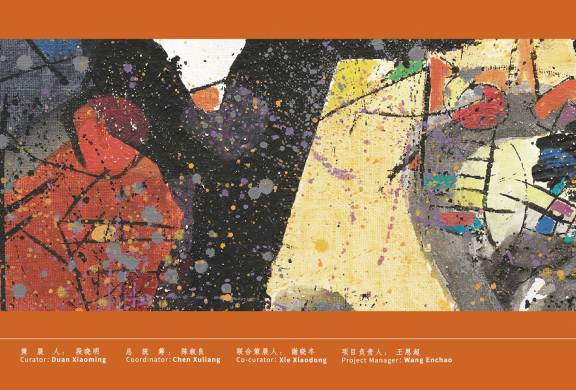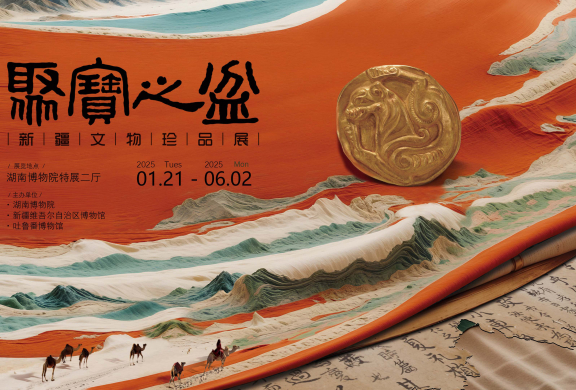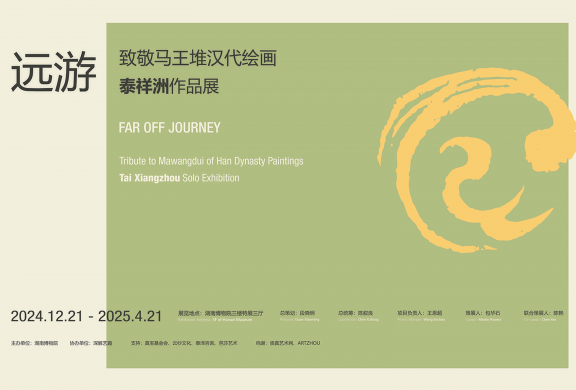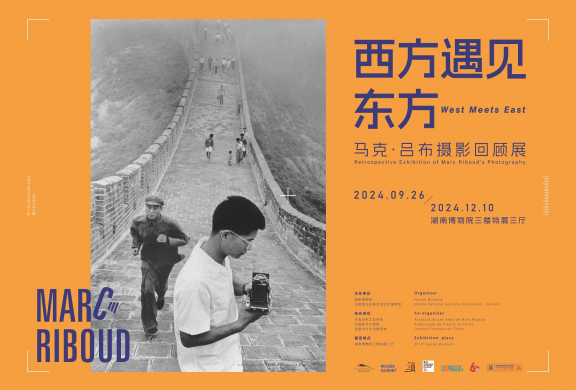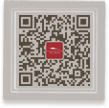Past Exhibitions
“Book on Bamboo Silk Bao Xianlun and Chen Yangjing Calligraphy ExhibitionNo.3 Special Exhibition Hall, 3F 2025.08.22 - 2025.10.09 Hunan Museum will present “Book on bamboo silk Bao Xianlun and Chen Yangjing calligraphy exhibition” in Special Exhibition Hall 3 on the third floor from August 23 to October 9, 2025. The exhibition is co-organized by Hunan Museum and Hunan Provincial Painting Academy. Hunan ranks among the most significant regions in China for bamboo and silk manuscripts, accounting for nearly two-thirds of the nation’s total discoveries. Notable archaeological findings including the Warring States silk manuscripts from Zidanku, Qin dynasty bamboo slips from Liye, Han dynasty silk texts from Mawangdui, and the Wu State bamboo slips of the Three Kingdoms period unearthed at Changsha’s Zoumalou site, are unparalleled nationwide in terms of historical span, preservation quality and content richness. These artifacts constitute a treasure trove of Chinese calligraphic art and reflect the profound cultural legacy of the Hunan region. The exhibition title, “Book on bamboo silk”, embodies a dual curatorial vision. First, it refers to the two calligraphers’ profound deconstruction and creative reinterpretation of traditional Chinese calligraphy. Through their distinctive brushwork, they revitalize the spirit of ancient writing and pay homage to its classical origins. Second, it underscores the shared commitment of museums and calligraphers in the modern era: to enhance the conservation and dynamic utilization of bamboo and silk manuscripts. By facilitating a cross-temporal dialogue between contemporary calligraphic practice and ancient artifacts, the exhibition seeks to genuinely bring cultural relics to life, transcending their static display in storage or vitrines. Structured as a dual solo exhibition, the presentation is divided into two sections, each dedicated to one artist’s contemporary transformation of bamboo and silk manuscript aesthetics, informed by their unique calligraphic style. Featuring over 70 works (sets) by Bao Xianlun and Chen Yangjing, the exhibition draws inspiration from slip calligraphy, with each artist tracing its origins and achieving modern excellence in Qin and Han-inspired creations through highly individualized brush language. This endeavor initiates a transcendent conversation through bamboo and silk across time. Their works seamlessly integrate the subtleties of traditional calligraphy with contemporary aesthetic sensibilities, demonstrating both a deep engagement with China’s cultural legacy and the innovative vitality of calligraphic art in the present day. |
Mental Image: Gu Gan's Abstract Art of CalligraphyNo.3 Special Exhibition Hall, 3rd F 2025.05.15 - 2025.08.16 Jointly presented by Hunan Museum and Beijing Yunmiao Culture, “Mental Image: Gu Gan’s Abstract Art of Calligraphy” is on view in Special Exhibition Hall 3, Third Floor of Hunan Museum from 16 May to 16 August 2025. Commemorating the fifth anniversary of Mr. Gu Gan’s passing—Hunan’s preeminent artist, this exhibition adopts a segmented chronological manner to trace his pioneering journey from the mid - 1980s through 2015. Through three decades of relentless artistic exploration, Gu Gan introduced the “symbolist” abstraction of Chinese character calligraphy to the global stage, forging a distinctive visual lexicon that transcends cultural boundaries. Curated with around sixty seminal works capturing the apex of his career, the exhibition traces Gu Gan’s transformative path. It begins with his pivotal role in organizing the groundbreaking 1985 “First Modern Calligraphy Exhibition” by the Modern Painting and Calligraphy Association—a watershed moment in contemporary Chinese art history. Throughout his practice, he masterfully interwove the form, meaning, and gestural lines of Chinese characters into modernist abstraction. His mental image became a vessel for transcendental spirit, a dialogue with his homeland, and an ode to the revered Huxiang culture. This retrospective invites us to rediscover, reinterpret, and redefine “a Hunan native artist who evolved from local roots to gain global resonance”. The exhibition aspires to invigorate the innovation and evolution of contemporary Chinese art. It invites viewers to contemplate the artist’s synthesis of Eastern and Western aesthetics, witness his deep-rooted engagement with traditional Chinese culture, and appreciate his singular contribution to abstract art—a path forged amid the tides of global artistic discourse. |
The Treasures of Xinjiang: Exhibition of Precious Cultural Relics from XinjiangNo.2 Special Exhibition Hall, 1st F 2025.01.21 - 2025.06.01 Xinjiang is a region boasting vast territory, abundant resources, magnificent landscapes, and a splendid historical and cultural heritage. Since time immemorial, it has served as a melting pot for multiple ethnic groups, religions, and cultures. Central governments throughout different dynasties have exercised jurisdiction over Xinjiang. All ethnic groups in Xinjiang are closely - knit members of the Chinese nation, bound by blood. They treat each other like family, offering mutual support, sharing joys and sorrows, and standing together through thick and thin. Over thousands of years of interaction, exchange, and integration, people of all ethnic groups in Xinjiang have united as closely as pomegranate seeds within the big family of the Chinese nation. They have composed a magnificent epic of developing and building Xinjiang, jointly forging a diverse yet integrated and resplendent Chinese civilization. The unique geographical environment endows Xinjiang's historical and cultural heritage with distinct regional characteristics. The textiles, documents, and tomb paintings unearthed in Xinjiang have far - reaching influence both nationally and globally. These can be regarded as national treasures, depicting the production and living conditions of ancient Xinjiang residents and providing copious materials for research in disciplines such as history, archaeology, and art. In the late Qing Dynasty, Zuo Zongtang, a national hero from Hunan, led his troops to reconquer Xinjiang. He highly commended Xinjiang, stating, "Both the southern and northern regions of the Tianshan Mountains are abundant in grain production, with numerous fruits, flocks of cattle and sheep, and herds of horses. There are extremely rich reserves of coal, iron, gold, silver, and jade. What appears to be a vast expanse of desert for thousands of miles is actually a basin teeming with treasures." This time, the Hunan Museum, in collaboration with the Xinjiang Uygur Autonomous Region Museum and the Turpan Museum, is jointly hosting "The Treasures of Xinjiang: Exhibition of Precious Cultural Relics from Xinjiang". A total of 158 pieces (sets) of precious cultural relics, encompassing metalware, pottery, textiles, documents, calligraphy, and paintings, have been meticulously selected. The exhibition unfolds the historical and cultural narratives of Xinjiang from aspects such as the natural environment, the transformation from nomadic to agricultural production patterns, and the rich material and spiritual civilizations. The Tianshan Mountains, a World Natural Heritage, traverse the central part of Xinjiang. Beneath the Tianshan Mountains lies the Silk Road, stretching across thousands of miles and spanning thousands of years. The Silk Road Spirit, characterized by peace and cooperation, openness and inclusiveness, mutual learning, and mutual benefit, is a legacy of human civilization. The treasures along the Silk Road embody the beauty of China's diverse yet integrated landscapes, history, and culture. Xinjiang's rich cultural heritage is a spiritual and cultural extravaganza that people of all ethnic groups should not miss. |
A Far Journey - An Exhibition of Tai Xiangzhou's Works in Tribute to the Han Dynasty Paintings of MawangduiNo.3 Special Exhibition Hall, 3F 2024.12.19 - 2025.02.21 From December 21, 2024 to February 21, 2025, Hunan Museum will hold the "A Far Journey - An Exhibition of Tai Xiangzhou's Works in Tribute to the Han Dynasty Paintings of Mawangdui" in No.3 Exhibition Hall on the third floor. This exhibition is the grand finale of the series of activities marking the 50th anniversary of the archaeological excavation of the Mawangdui Han Tombs by Hunan Museum. It carefully selects a total of 70 pieces (sets) of Tai Xiangzhou's new works in the past two years and representative works from different periods, which is a phased summary and retrospective exhibition of Tai Xiangzhou. The exhibition is divided into four sections, mainly presenting a new interpretation of the cultural patterns of the Han Dynasty in Mawangdui in the contemporary context, and how to continuously update artistic expressions with the characteristics of the times in the face of the profound history and culture of Xiaoxiang. The Xiaoxiang series of works are based on Tai Xiangzhou's research on Song Dynasty paintings. Considering the locality of the exhibition itself and combining the traditional culture and landscape features of Hunan, he reinterprets and explains the historically famous "Eight Scenes of Xiaoxiang Landscape Paintings" in a contemporary artistic language, completing a dialogue with the Huxiang culture, which can also be called "Inquiring into Xiaoxiang". The Celestial Phenomena series is one of his representative works. Especially in the expression of mountain stone structures and clouds, he has developed his own unique painting language, expanding ink painting to the spatial and temporal dimensions of geography and even cosmology. Learning from the ancients is the best way to study traditional Chinese painting. Tai Xiangzhou's Imitation of Ancient Landscape series precisely takes inspiration from the classic landscape paintings of the Song Dynasty and injects his own ideas and concepts, making the paintings present the characteristics of the times with "new looks on ancient appearances". Tai Xiangzhou deeply understands that to enter the history of art, one must be familiar with the ideological and philosophical histories of ancient and modern times and complete one's own artistic construction and academic system. Looking at his painting process and ideological concepts, you will find that they subtly conform to Chinese philosophy and artistic spirit, reflecting the contemporary artist's thinking and exploration of the real world in the context of the new era. The exhibition aims to actively promote the innovation and |
West Meets East:Retrospective Exhibition of Marc Riboud’s PhotographyNo.3 Special Exhibition Hall, 3F 2024.09.26 - 2024.12.10 2024 marks the 60th anniversary of the establishment of diplomatic relations between China and France and the "China-France Year of Cultural Tourism". On this significant celebratory year, the Hunan Museum, in collaboration with the Musee National des Arts Asiatiques-Guimet, will hold the West Meets East:Retrospective Exhibition of Marc Riboud’s Photography in the special exhibition hall on the third floor of the Hunan Museum from September 26 to December 10, this exhibition is free to the public. This exhibition is organized by the Hunan Museum and the Musee National des Arts Asiatiques-Guimet, co-organized by the Association Les amis de Marc Riboud, Ambassade de France en Chine and Institut francais de Chine. This exhibition is also an important visual art project of the "2024 Croisements Festival-Special Presentation for the 60th Anniversary of the Establishment of Diplomatic Relations between China and France". This exhibition selects 118 pieces/sets of classic photographic works by Marc Riboud from the collection of the Musee National des Arts Asiatiques- Guimet, including the valuable photos taken by Marc during his more than 20-times visits to China from 1957 to 2010. With Marc’s acute instinct, unique artistic insight and abundant photographic language, he captured the real pictures of various classes of Chinese society, and objectively introduced the huge transformation of history and society in China from 1950s to 2010 to the West. Marc’s photographic works not only have extremely high artistic value but also monumental historical significance. His works have witnessed great historical changes in China, many classic moments have become the epitome of China in the 20th century. As Marc Riboud said, "The countries I love are like my friends. I like to see them again and understand their development and changes. Therefore, I often return to China. Everything here is developing faster than in other places. Even a careful person can see the eternity of things under this restless appearance." |
The Pure Heart of Art, The Nostalgia in Ink -- Exhibition of Su Gaoyu's WorksNo.3 Special Exhibition Hall, 3F 2024.08.17 - 2024.09.10 The Hunan Museum will hold the exhibition “ The Pure Heart of Art, The Nostalgia in Ink -- Exhibition of Su Gaoyu's Works” in the Special Exhibition Hall on the third floor from August 17, 2024 to September 10. The exhibition was jointly hosted by the Hunan Museum, the Hunan Artists Association, the Hunan Provincial Painting Academy, and co-organized by the Publicity Department of the CPC Xiangxi Prefecture Committee. The exhibition has selected more than 100 pieces (sets) of Su Gao Yu's works, covering Su's creative process of more than 40 years. It is a retrospective exhibition on stage-by-stage summary.To prominently showcase Su's artistic styles and creative concepts in different periods, this exhibition selected Su’s representative works from each period so that the audience can have a profound comparison when viewing. The curatorial team communicated and coordinated with Su himself many times during the preparation of the exhibition. As the works themselves are mainly expressive freehand painting themed on flower-and-bird, considering the limitation of the exhibition area, in order to maximize the presentation of the characteristics of the works themselves, this exhibition still broke the museum's conventional curatorial method of using time clues as the vein, and eliminated the unit descriptions, so as to allow the works themselves to go to the audience for a dialogue. In terms of the flow of visitors, the form designer, in accordance with the characteristics of the area itself, did not borrow too much from the exhibition wall to set up a diversion area, but took the audience's point of sight as the core, and created a visiting atmosphere in line with the tone of the works step by step. Despite the absence of large-scale thematic works, the expressive freehand paintings themed on flower-and-bird reveal a vast world within small details. The exhibition strives to foster innovation in contemporary Chinese freehand paintings themed on flower-and-bird and encourage a deeper understanding and preservation of China's rich cultural heritage. |
- 1 of 13
- ››


